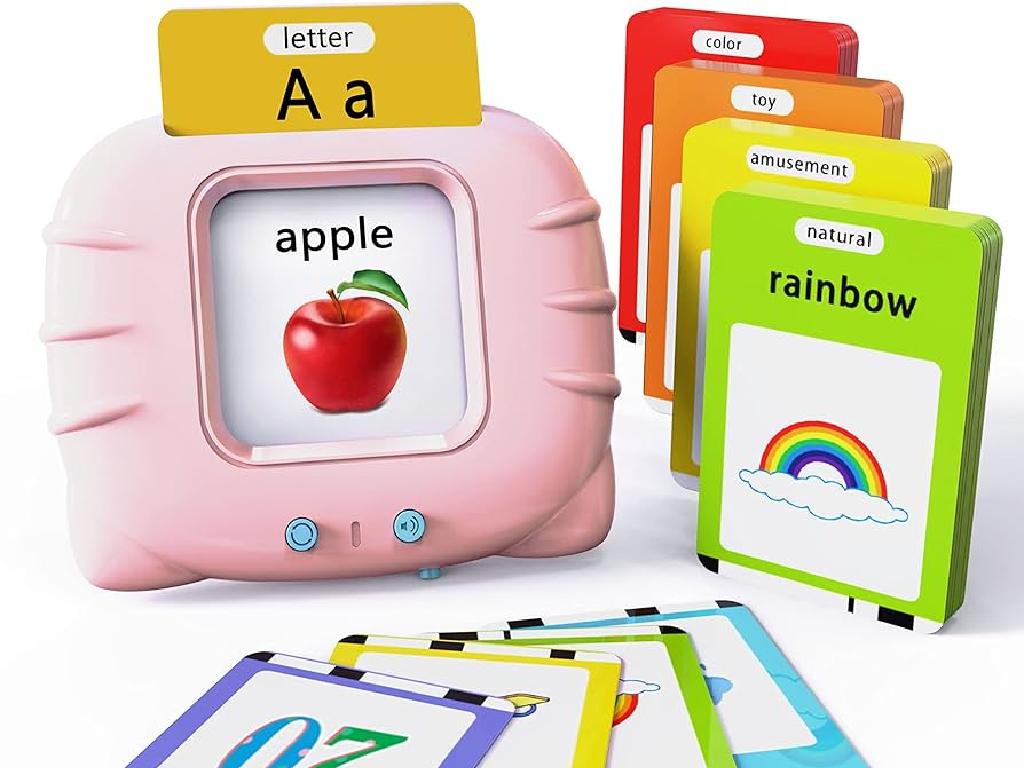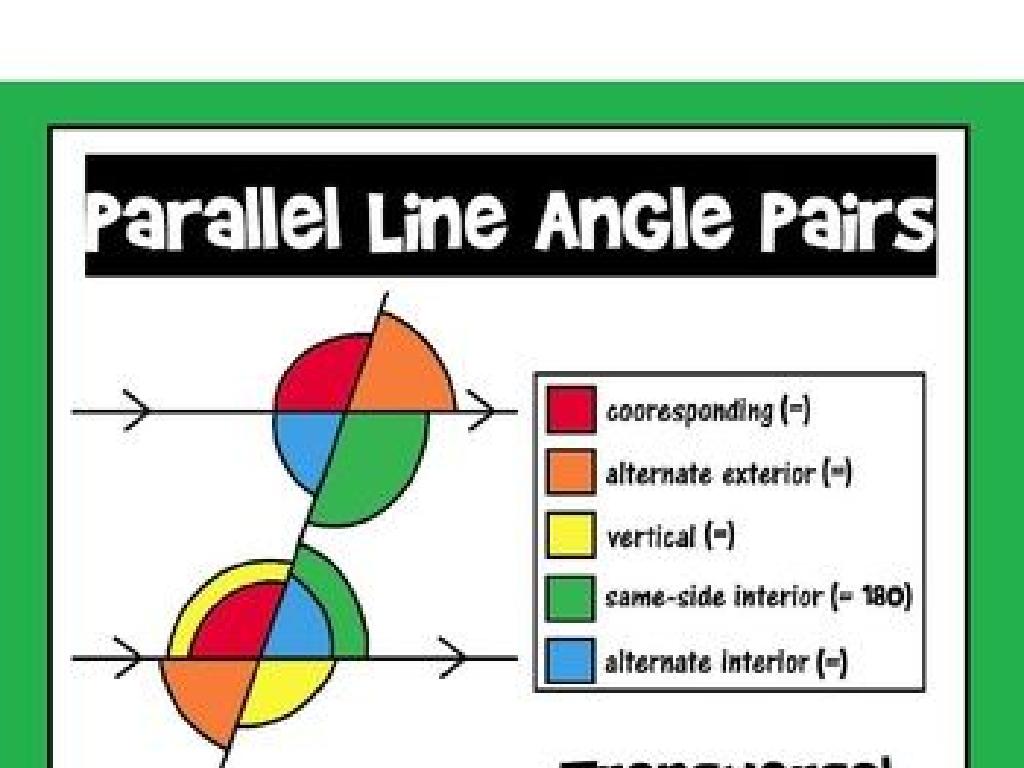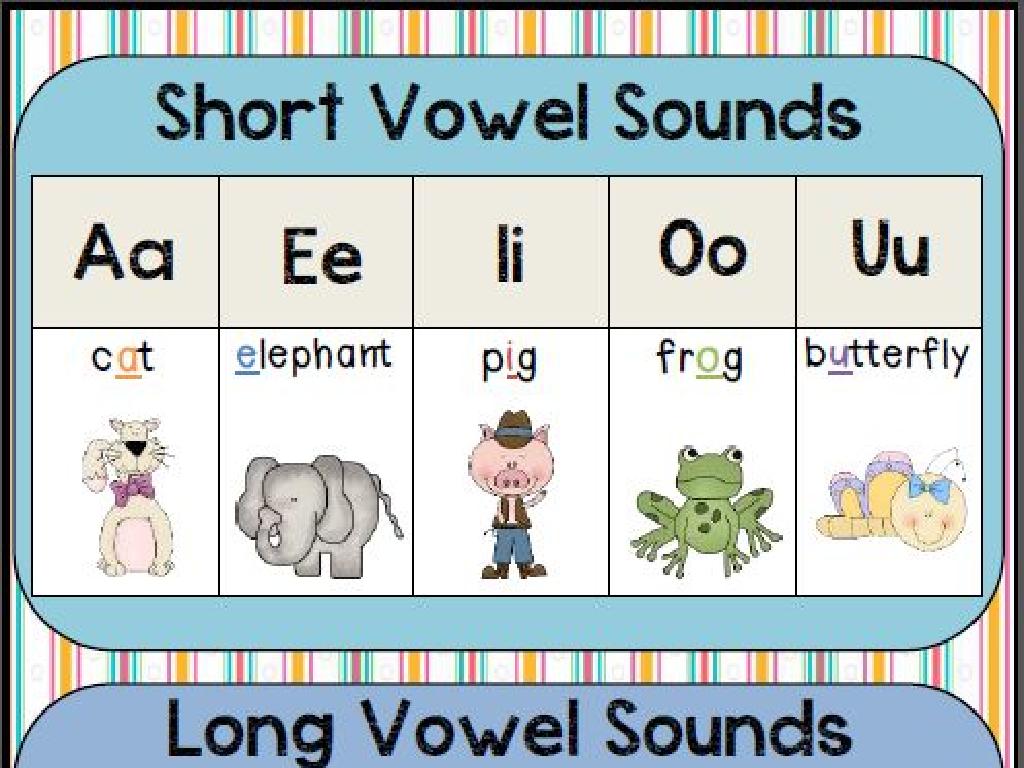Solve A System Of Equations Using Elimination: Word Problems
Subject: Math
Grade: Eighth grade
Topic: Systems Of Equations
Please LOG IN to download the presentation. Access is available to registered users only.
View More Content
Solving Systems of Equations by Elimination
– Define systems of equations
– A set of two or more equations with the same variables
– Systems in real-life contexts
– Used for budgeting, planning trips, or even in sports strategies
– Elimination method overview
– Add or subtract equations to eliminate one variable
– Practice with word problems
|
This slide introduces the concept of systems of equations, which are fundamental in algebra and represent real-world problems where two or more variables interact. Students should understand that these systems can model complex scenarios like financial planning or logistics. The elimination method is one of the techniques to solve these systems, where one variable is removed by combining equations. This sets the stage for students to apply this method to word problems, enhancing their problem-solving skills. Encourage students to think of situations in their lives that could be modeled with a system of equations. Provide examples and guide them through the process of setting up and solving a system using elimination.
Solving Systems with Elimination
– Define elimination method
A technique to solve a system of equations by removing one variable.
– How elimination finds solutions
Add or subtract equations to cancel out one variable and solve for the other.
– Compare elimination to other methods
Unlike graphing, it’s algebraic. More direct than substitution when variables align.
– Practice problem using elimination
Example: x + y = 6 and x – y = 4. Add to eliminate y and find x = 5, then y = 1.
|
The elimination method involves combining two equations in a way that cancels out one of the variables, making it possible to solve for the remaining variable. This method is particularly useful when the coefficients of one of the variables are the same or opposites. It’s a more straightforward approach compared to substitution when the equations are already set up for elimination, and it can be more accurate than graphing, which can be imprecise due to scale or drawing inaccuracies. Provide students with a step-by-step guide on using elimination, and follow up with practice problems that reinforce the concept. Encourage students to compare the methods and understand when elimination might be the most efficient choice.
Setting Up Word Problems for Elimination
– Identify variables in problems
– Variables represent unknowns, e.g., x for apples, y for oranges
– Write equations from descriptions
– Translate words to math: ‘total cost’, ‘number of items’ become equations
– Align equations for elimination
– Equations must be structured to cancel one variable
– Understand elimination method
– Elimination involves adding/subtracting equations to solve for variables
|
This slide is aimed at teaching students how to set up systems of equations from word problems for the purpose of solving them using the elimination method. Start by identifying the variables that represent unknown quantities in the problem. Next, translate the problem description into mathematical equations, ensuring that the terms are aligned correctly. For example, if the problem involves adding the cost of apples and oranges, the equations should reflect the total cost as the sum of the number of apples times the cost per apple and the number of oranges times the cost per orange. It’s crucial that the equations are structured so that when they are added or subtracted, one of the variables is eliminated, allowing for the remaining variable to be solved. Provide examples and practice problems to reinforce the concept.
Solving Systems by Elimination: Word Problems
– Read the problem as a class
– Set up the system of equations
– Translate the word problem into algebraic equations
– Use elimination to solve for one variable
– Add or subtract equations to eliminate one variable
– Find the second variable’s value
– Substitute the known value to solve for the other variable
|
This slide is aimed at guiding students through the process of solving a system of equations using the elimination method in the context of a word problem. Start by reading the problem aloud to ensure comprehension. Next, help students translate the problem into a system of equations, identifying variables that represent quantities in the problem. Demonstrate the elimination process by adding or subtracting the equations to remove one variable, making it possible to solve for the other. Once one variable is found, substitute it back into one of the original equations to find the value of the second variable. Encourage students to check their solutions by plugging the values back into both equations. Provide an example problem that involves realistic scenarios to make the activity relatable and engaging.
Solving Systems by Elimination: Complex Problems
– Introduce a complex elimination problem
– Align like terms correctly
– Ensure variables and their coefficients are lined up
– Solve the system step-by-step
– Add or subtract equations to eliminate one variable
– Verify the solution with original equations
– Substitute the found value into either equation to check
|
This slide moves students into more challenging territory by presenting a complex problem that requires solving a system of equations using the elimination method. Emphasize the importance of aligning like terms to set up the equations correctly for elimination. Walk through the problem-solving process step-by-step, demonstrating how to add or subtract the equations to eliminate one variable. Once a solution is found, it’s crucial to verify it by substituting the values back into the original equations to ensure they satisfy both. This reinforces the concept and shows the practicality of the elimination method. Encourage students to ask questions and work through the problem along with you to solidify their understanding.
Class Activity: Solving Systems by Elimination
– Work on practice problems together
– Attempt problems before seeing solutions
– Encourage independent problem-solving skills
– Discuss challenges faced
– Share and learn from different approaches
– Address any questions
– Clarify doubts, reinforce learning
|
This slide is designed for a class activity focused on practicing the elimination method to solve systems of equations. Start by presenting a word problem to the class without showing the solution. Allow students time to work on the problem independently or in small groups, encouraging them to apply the elimination method. Afterward, reveal the solution step by step, and compare it with the students’ methods. Open the floor for discussion about any difficulties encountered during the process and answer questions to clarify misunderstandings. This activity aims to build confidence, enhance problem-solving skills, and ensure students understand the elimination method in the context of word problems. Possible activities could include varying difficulty levels of problems, timed challenges, or peer-teaching opportunities.
Class Activity: Solve & Create with Elimination
– Solve a provided word problem in pairs
– Create your own elimination word problem
– Think of a scenario where quantities combine to form a system
– Exchange problems with another pair
– Solve the exchanged word problem
– Apply elimination method to find the solution
|
This interactive class activity is designed to reinforce the concept of solving systems of equations using the elimination method through practice and creativity. Students will first work in pairs to solve a word problem provided by the teacher, which will serve as a direct application of the lesson. Afterward, each pair will be tasked with creating their own word problem that can be solved using the elimination method, encouraging them to think critically about real-life scenarios where systems of equations are applicable. Once the problems are created, pairs will swap their problems with another pair, challenging them to solve a new problem. This activity promotes collaboration, problem-solving, and a deeper understanding of the elimination method. As a teacher, prepare to facilitate the activity by providing guidance and ensuring each word problem is solvable. Offer examples of word problems, monitor the pairs as they work, and be ready to assist with any difficulties. Encourage creativity and ensure that the problems created require the use of elimination to solve.
Review & Reflect: Elimination Method
– Recap elimination method steps
– Combine equations to cancel out one variable, then solve for the other
– Discuss method’s application
– Apply to real-life problems like budgeting or mixing solutions
– Reflect on learning outcomes
– Think about how this method compares to others you’ve learned
– Seek student feedback
|
This slide aims to consolidate the students’ understanding of the elimination method for solving systems of equations. Begin by reviewing the steps of the elimination method, emphasizing the importance of aligning terms and strategically multiplying to cancel out one variable. Discuss various real-world scenarios where this method is applicable, such as financial planning or chemistry. Encourage students to reflect on their learning journey, how they have progressed with the method, and how it fits into the broader context of solving systems of equations. Finally, ask for feedback on the lesson to gauge understanding and address any lingering questions. This feedback will be valuable for planning future lessons and ensuring student comprehension.






